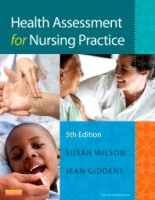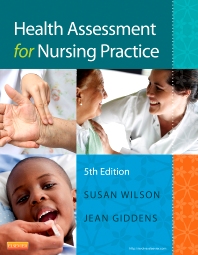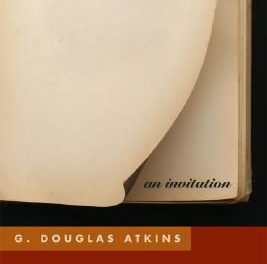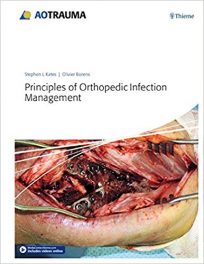 Authors: Susan Fickertt Wilson and Jean Foret Giddens
Authors: Susan Fickertt Wilson and Jean Foret Giddens
Contributors: Christine A. Tanner, Joanne Bartram, and Carolyn Montoya
Ancillary Writers: Scharmaine Lawson-Baker, Maria E. Lauer,. Darlene D. Brink,
Susan Fickertt Wilson, and Anne F. Meyer
Publisher: Elsevier Saunders – 606 pages
Book Review by: Nano Khilnani
Access to the student resources – including the free study tools listed below – for this book is available by registering on http://evolve.elsevier.com/deWit/Fundamental.
• Animations
• Audio – heart and lung sounds
• Case studies
• Content updates
• Examination techniques
• Key points
• Laboratory guides
• Review questions
• Skill checklists
• Video clips
This is a very well-organized book that makes for easier learning. Each of the chapters has well thought-out headings and subheadings that take the student through a systematic, step-by step learning process.
For example chapter 2, entitled Interviewing Patients to Obtain a Health History, starts out with the first heading – The Interview. Following an overview of what an interview consists of, are subtopics: Phases of the Interview, Communication Skills for Interviewing, The Physical Setting, Professional Behavior, Patient-Related Variables, The Art of Asking Questions, Types of Questions to Ask, Techniques That Enhance Data Collection (with several relevant aspects of this covered), Techniques That Diminish Data Collection (also with several other aspects), Managing Ackward Moments During an Interview, and Challenges to the Interview.
What follows all the above is a second heading – The Health History – with many subtopics, some with relevant aspects.
Towards the end of this chapter is a section entitled Age-Related Variations dealing with infants, children, and adolescents; pregnant women; and older adults. A Summary of this section is also provided. Another section follows it entitled Clinical Application and Clinical Reasoning., with a note to see Appendix D for answers to exercises in this section. Review Questions, a Case Study and a suggested Activity are provided on the last page.
It provides a lot of graphics that helps students absorb the material, such as: boxes; charts; full-color photos; multi-dimensional, detailed anatomical drawings; and tables
The fifth edition of book that shows nursing students how to assess the health of patients is extensive in coverage. It contains 24 chapters on a wide range of subjects that are grouped together in four Units, which are entitled:
1. Foundations for Health Assessment
2. Health Assessment of the Adult
3. Health Assessment Across the Life Span
4. Synthesis and Application of Health Assessment
Among the valuable special features of this book are:
• Health Promotion for Evidence-Based Practice – discussions for promoting health
• Examination section in each body system chapter – outlines procedures performed routinely, in special circumstances, or in advanced nursing practice.
• Advanced Practice Skills – bridges the gap between undergraduate and advanced practice education.
• Risk factors – information specific to various body systems and disorders.
• Clinical Reasoning: Thinking Like a Nurse – shows students how an experienced nurse makes decisions, and includes examples of how experts notice, interpret and respond to clinical situations.
• Frequently Asked Questions – answers common questions students have as they are learning health assessment.
• Clinical Applications and Clinical Reasoning – appearing near the end of each chapter and include case studies and review questions with answers provided in Appendix D to help students evaluate their learning.
• Quality Improvement Competencies for Nurses – tables that provide assessment related to Quality and Safety Education for Nurses (QSEN) competencies, including patient-centered care, teamwork and collaboration, safety, and informatics.
• Ethnic, Cultural, and Spiritual Variations – reformatted boxes that anticipate the unique needs of a multicultural patient population.
The book has four helpful Appendices: A. Health History Using Functional Health Patterns; B. Conversion Tables, C. Abbreviations; and D. Answer Key, Glossary, Illustration Credits, and References. Eight reviewers added value to this book.
Susan Fickertt Wilson, PhD, RN, CNE, is associate professor in the School of Nursing at the College of Health in the University of Alaska in Anchorage. She is also emeritus associate professor at the Harris College of Nursing and Health Sciences at Texas Christian University in Fort Worth, Texas.
Jean Foret Giddens, PhD, RN, FAAN, is professor and executive dean at the College of Nursing in the University of New Mexico in Albuquerque, New Mexico.







